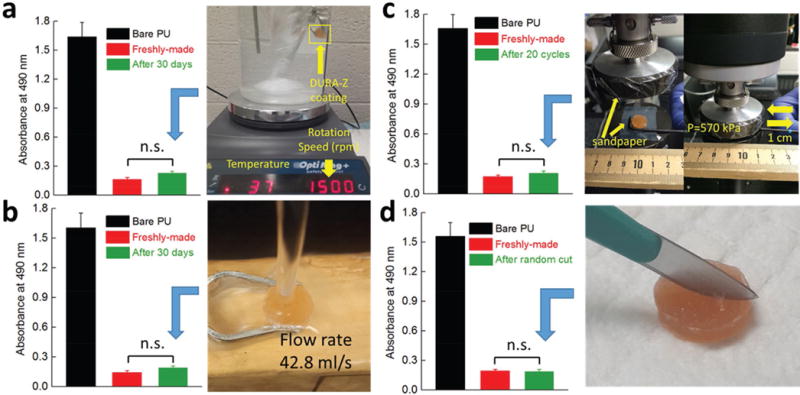Figure 3.

Antifouling property of DURA-Z coating after various durability and mechanical damage tests. a) 30 d exposure to PBS shearing under body temperature, b) 30 d exposure to perpendicular water flush, c) 20 cycles of abrasion test under 570 kPa, and d) random scratch by a scalpel. The antifouling property was evaluated by the resistance of human fibrinogen binding on the surface (absorbed protein) before and after the coating being challenged. All data are presented as mean of replicates (n = 3) ± standard deviation. Statistical analysis: unpaired, two-tailed t-test, n.s.: no significant difference at P > 0.05, meaning the great antifouling property was retained.
